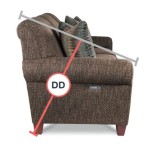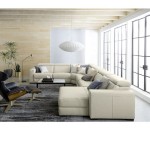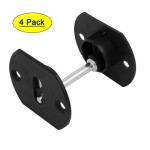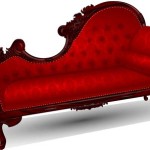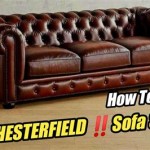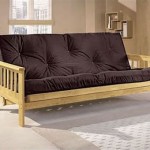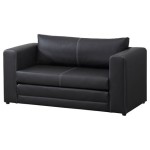```html
Salon Sofa Furniture: A Comprehensive Guide
Salon sofa furniture plays a critical role in establishing the aesthetic and functional character of a salon space. More than just seating, these pieces contribute significantly to the overall client experience, reflecting the salon's brand identity and commitment to comfort. Selecting the right salon sofa furniture necessitates a careful consideration of various factors, including design, materials, durability, ergonomics, and spatial constraints.
The purpose of salon sofa furniture extends beyond mere utility. It acts as a focal point in waiting areas, creating a welcoming and relaxing ambiance for clients awaiting appointments. Comfortable and stylish sofas can alleviate pre-treatment anxieties and elevate the perceived value of the salon's services. Furthermore, strategically placed sofas can define distinct zones within the salon, separating the reception area from the treatment spaces, enhancing privacy and creating a sense of order.
Understanding Different Styles and Designs
The market offers a diverse range of salon sofa furniture styles, each catering to different design preferences and functional needs. A detailed understanding of these styles is crucial for making informed decisions that align with the salon's overall aesthetic.
Modern Sofas: Characterized by clean lines, minimalist silhouettes, and contemporary materials such as metal, glass, and leatherette, modern sofas project a sophisticated and sleek image. These sofas often feature neutral color palettes and geometric shapes, lending a sense of spaciousness and order to the salon environment. They are particularly well-suited for salons that aim for a cutting-edge and technologically advanced atmosphere.
Classic Sofas: Evoking a sense of timeless elegance, classic sofas feature ornate detailing, plush upholstery, and traditional silhouettes. These sofas often incorporate luxurious fabrics such as velvet, silk, and brocade, exuding a sense of grandeur and sophistication. They are ideal for salons that cater to a discerning clientele seeking a more traditional and refined experience. Chesterfield sofas, with their deep button tufting and rolled arms, are a quintessential example of classic sofa design.
Contemporary Sofas: Representing a fusion of modern and classic elements, contemporary sofas offer a versatile and adaptable design solution. They often feature clean lines and simple silhouettes, but incorporate softer textures and warmer color palettes to create a more inviting and comfortable atmosphere. Contemporary sofas are a popular choice for salons seeking a balance between style and comfort.
Sectional Sofas: Consisting of multiple modular pieces that can be arranged in various configurations, sectional sofas offer unparalleled flexibility and adaptability. They are particularly well-suited for larger salon spaces, providing ample seating for multiple clients. Sectional sofas can be customized to fit the specific dimensions of the space and can be easily reconfigured to accommodate changing needs.
Loveseats: Offering a more compact and intimate seating option, loveseats are ideal for smaller salon spaces or for creating designated waiting areas for couples. They provide comfortable seating for two people and can be strategically placed to maximize space utilization.
Material Considerations: Durability and Aesthetics
The choice of materials for salon sofa furniture is a crucial factor that directly impacts its durability, aesthetics, and maintenance requirements. Selecting materials that can withstand the rigors of a high-traffic salon environment is essential for ensuring longevity and preserving the furniture's appearance.
Upholstery Fabrics: The upholstery fabric plays a significant role in both the aesthetic appeal and the durability of the sofa. Leather and leatherette are popular choices due to their durability, stain resistance, and elegant appearance. However, they require regular cleaning and conditioning to prevent cracking and fading. Microfiber fabrics are another excellent option, offering a soft and comfortable feel while being highly resistant to stains and wear. Velvet and other delicate fabrics can add a touch of luxury but are more susceptible to damage and require specialized cleaning.
Frame Materials: The sofa frame provides the structural support and determines its overall stability and longevity. Hardwood frames, such as oak, maple, and ash, are the most durable and long-lasting option, capable of withstanding significant weight and stress. Softwood frames, such as pine, are a more affordable alternative but are less durable and may be prone to warping or cracking over time. Metal frames offer a sleek and modern aesthetic while providing excellent strength and durability. Consider the expected usage and budget when choosing the frame material.
Cushion Filling: The cushion filling determines the comfort level of the sofa and its ability to maintain its shape over time. High-density foam is a popular choice for its excellent support and durability, providing a firm and comfortable seating experience. Down filling offers a luxurious and plush feel but requires more frequent fluffing to maintain its shape. Fiberfill is a more affordable alternative that offers a decent level of comfort but may flatten out over time. A combination of different fillings can provide a customized level of comfort and support.
Leg Materials: The sofa legs not only contribute to the overall aesthetic but also provide crucial support and stability. Wood legs offer a classic and traditional look, while metal legs provide a more modern and contemporary appearance. Ensure the legs are securely attached to the frame and can withstand the weight of the sofa and its occupants. Consider the height of the legs, as this can impact the overall comfort and accessibility of the sofa.
Ergonomics and Client Comfort
The ultimate goal of salon sofa furniture is to provide a comfortable and relaxing experience for clients. Ergonomic considerations are paramount in selecting sofas that promote proper posture and minimize discomfort, especially for clients who may be waiting for extended periods.
Seat Height and Depth: The seat height should be appropriate for the average client, allowing them to sit comfortably with their feet flat on the floor. A seat that is too high or too low can lead to discomfort and strain. The seat depth should also be considered, ensuring that clients can sit comfortably without feeling cramped or overwhelmed.
Back Support: Adequate back support is essential for maintaining proper posture and preventing back pain. Sofas with high backs and lumbar support cushions are ideal for providing optimal comfort and support. The angle of the backrest should also be considered, ensuring that it provides adequate support without forcing clients into an uncomfortable position.
Armrests: Armrests provide additional support and comfort, allowing clients to relax their arms and shoulders. The height and width of the armrests should be appropriate for the average client, allowing them to rest their arms comfortably without feeling strained.
Cushion Firmness: The firmness of the cushions should be carefully considered, balancing comfort and support. Cushions that are too soft may sink in too much, providing inadequate support. Cushions that are too firm may be uncomfortable and unforgiving. A medium-firm cushion is generally considered the most comfortable and supportive option.
Overall Design: The overall design of the sofa should be conducive to relaxation and comfort. Avoid sofas with sharp edges or uncomfortable angles. Opt for sofas with smooth curves and soft textures. Consider adding throw pillows and blankets to enhance the comfort and visual appeal of the sofa.
Beyond the physical aspects of the sofa itself, the arrangement of the surrounding space is also crucial to client comfort. Ensure adequate lighting, temperature control, and access to reading materials or entertainment options. Creating a calming and inviting atmosphere will further enhance the client experience and leave a positive impression.
In conclusion, selecting the appropriate salon sofa furniture requires a thorough assessment of style, materials, and ergonomics. By carefully considering these factors, salon owners can create welcoming and comfortable waiting areas that reflect their brand identity and enhance the overall client experience. The investment in quality sofa furniture translates into improved customer satisfaction and ultimately contributes to the success of the salon.
```
Italian Light Luxury Sofa Leather Living Room Combination Of Minimalist Style Small Flat Three Straight Rows Furniture Home Sofas On Carou

Waiting Sofas And Armchairs For Salons S Furniture Leyform

Instock Lyra Sofa Chair Simple Modern Lamb Velvet Special Shaped Creative Homestay Beauty Salon Reception Rest Area Furniture Home Living Chairs On Carou

Modern Living Room Sets Gray Velvet Upholstered Chair Loveseat Sofa 3 Pieces Homary

Marveille 3 Seater Adjustable Headrest Sofa Furniture Home Décor Fortytwo

Modern French Bespoke Sofa Set Living Room Furniture Home Sofas On Carou

7 Tips On How To Maintain Upholstered Sofas And Chairs

New Design Modern Royal Luxury Chesterfield Leather Sofa Set For Home Hotel Living Room Salon Furniture China Made In Com

Salon Sofa Reception Seating

Elita Classic Sofa Set Salon Sets Models

